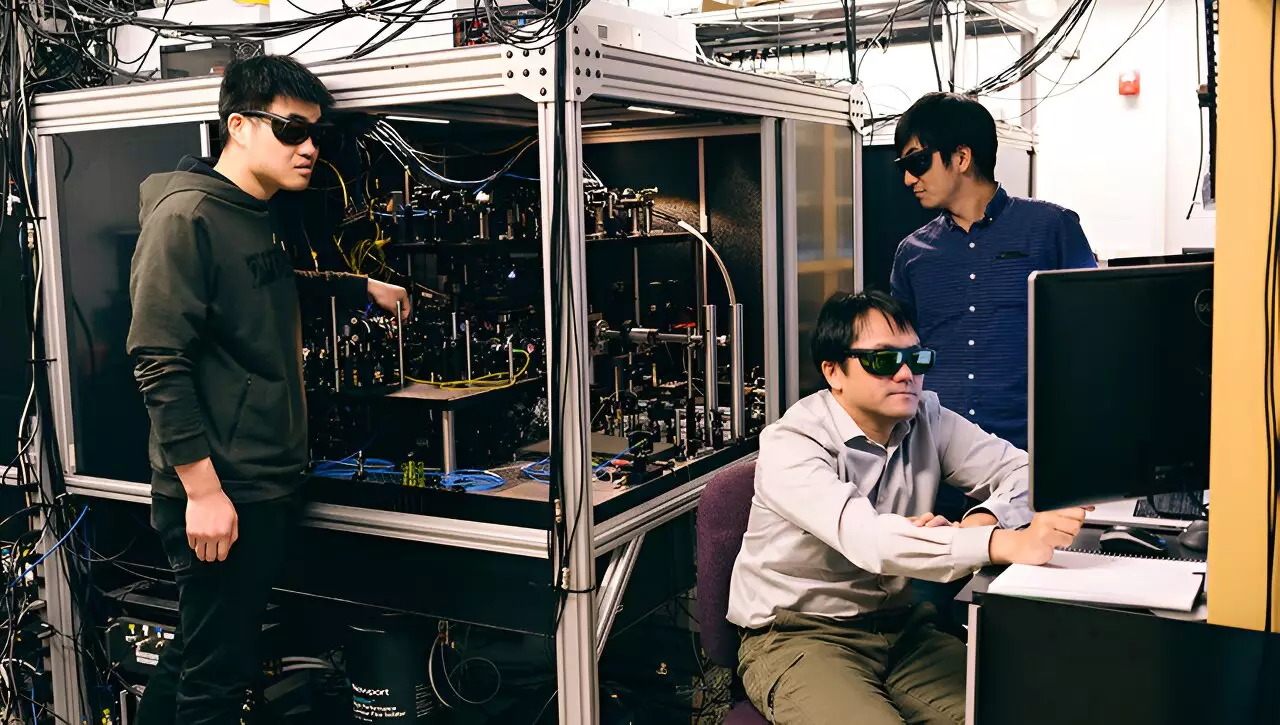Recently, researchers at Purdue University have made a groundbreaking discovery in the field of quantum networking by trapping alkali atoms, specifically cesium, on an integrated photonic circuit. This circuit acts as a transistor for photons, similar to electronic transistors, and paves the way for the development of quantum networks based on cold-atom integrated nanophotonic circuits.
Trapping Atoms with Precision
Led by Chen-Lung Hung, the team utilized lasers to cool and tightly trap atoms on the nanophotonic circuit, where light travels through a small photonic wire. These atoms are cooled to incredibly low temperatures, just above absolute zero, and are immobilized to interact efficiently with the photons confined in the waveguide. The atoms are placed very close to the waveguide, allowing for seamless interaction with the photons.
The Role of Microring Resonators
A crucial aspect of their research is the use of microring resonators, specifically the atom-coupled microring resonator, as a transistor for photons. This unique setup enables the atoms to control the flow of light through the circuit. When the atoms are in the correct state, photons can pass through, but if they are in another state, the passage of light is blocked. The efficiency of this gating mechanism increases with the level of interaction between the atoms and photons.
In their experiments, the researchers were able to trap up to 70 atoms on the integrated photonic chip and collectively couple them to photons to control their transmission. This level of control and precision has not been achieved before in quantum networking research, marking a significant advancement in the field.
The implications of this research are far-reaching. The development of atom-coupled integrated photonic circuits could revolutionize quantum computing based on neutral atoms. Additionally, it provides a platform for studying collective light-matter interactions and synthesizing quantum degenerate trapped gases or ultracold molecules. The principles of quantum superposition governing these circuits allow for the manipulation and storage of quantum information in trapped atoms, leading to potential applications in quantum networking.
With the successful demonstration of efficient cooling and trapping of atoms on a circuit, the research team at Purdue University is poised to explore new avenues in quantum networking. They plan to organize trapped atoms in an array along the photonic waveguide to improve photon storage fidelity. Additionally, they aim to delve into the realm of quantum matter states on integrated photonic circuits for in-depth studies of few- and many-body physics with atom-photon interactions.
The research conducted by the team at Purdue University represents a significant step towards the realization of quantum networks based on cold-atom integrated nanophotonic circuits. The future of this research is filled with promise and potential for further groundbreaking discoveries that could shape the future of quantum technology.


Leave a Reply